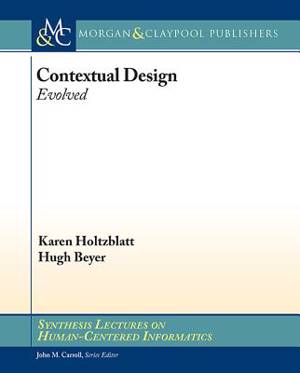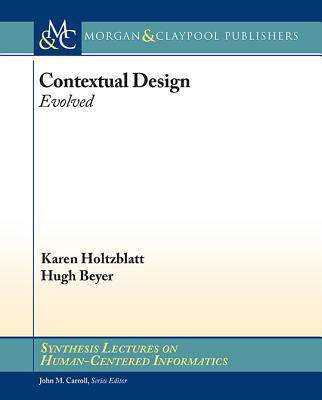
- Afhalen na 1 uur in een winkel met voorraad
- Gratis thuislevering in België vanaf € 30
- Ruim aanbod met 7 miljoen producten
- Afhalen na 1 uur in een winkel met voorraad
- Gratis thuislevering in België vanaf € 30
- Ruim aanbod met 7 miljoen producten
Zoeken
Omschrijving
Contextual Design is a user-centered design process that uses in-depth field research to drive innovative design. Contextual Design was first invented in 1988 and has since been used in a wide variety of industries and taught in universities all over the world. It is a complete front-end design process rooted in Contextual Inquiry, the widespread, industry-standard field data gathering technique. Contextual Design adds techniques to analyze and present user data, drive ideation from data, design specific product solutions, and iterate those solutions with customers. In 2013, we overhauled the method to account for the way that technology has radically changed people's lives since the invention of the touchscreen phones and other always-on, always-connected, and always-carried devices. This book describes the new Contextual Design, evolved to help teams design for the way technology now fits into peoples' lives. We briefly describe the steps of the latest version of Contextual Design and show how they create a continual immersion in the world of the user for the purpose of innovative product design. Table of Contents: Introduction / Design for Life / Field Research: Data Collection and Interpretation / Consolidation and Ideation: The Bridge to Design / Detailed Design and Validation / Conclusion / References / Author Biographies
Specificaties
Betrokkenen
- Auteur(s):
- Uitgeverij:
Inhoud
- Aantal bladzijden:
- 91
- Taal:
- Engels
- Reeks:
Eigenschappen
- Productcode (EAN):
- 9781627055581
- Verschijningsdatum:
- 1/10/2014
- Uitvoering:
- Paperback
- Formaat:
- Trade paperback (VS)
- Afmetingen:
- 190 mm x 235 mm
- Gewicht:
- 172 g

Alleen bij Standaard Boekhandel
+ 127 punten op je klantenkaart van Standaard Boekhandel
Beoordelingen
We publiceren alleen reviews die voldoen aan de voorwaarden voor reviews. Bekijk onze voorwaarden voor reviews.











